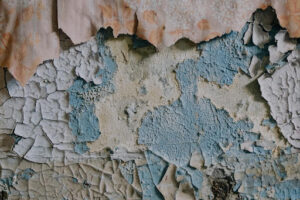Paint Falling Off Concrete Walls? Here’s What’s Happening
Paint peeling off concrete walls lowers the attractiveness of your home significantly and turns a clean bathroom into a messy and unsanitary room. When the paint starts falling off your ceiling or interior walls, it can also cause health problems for all the residents. The paint chips falling off the concrete walls can get into your eyes, causing damage, and even causing breathing problems if the paint dust gets into your lungs. Therefore, you must take paint peeling off and chipping from your walls seriously and contact paint restoration services in Cedar Rapids.
significantly and turns a clean bathroom into a messy and unsanitary room. When the paint starts falling off your ceiling or interior walls, it can also cause health problems for all the residents. The paint chips falling off the concrete walls can get into your eyes, causing damage, and even causing breathing problems if the paint dust gets into your lungs. Therefore, you must take paint peeling off and chipping from your walls seriously and contact paint restoration services in Cedar Rapids.
Paint can start falling off your walls after only a few days or after several years. It’s a common problem when you apply fresh paint on old plaster ceilings or drywall, but even wooden decks, window frames, sidings, trims, and bathroom walls can suffer from this problem. So, let’s look into why this happens.
Why Is My Paint Falling Off Concrete Walls?
Experts claim that paint starts to blister, crack, or peel off when there is a loss of adhesion between the surface and the paint. There are several reasons for this happening. For example, the wall wasn’t properly cleaned before applying the paint, there was no primer used, or the wrong type of paint was used on the walls. However, the main reason why paint may start falling off concrete walls is excessive moisture.
It may not come as a surprise because moisture is the cause of most household problems. It doesn’t mean you have a leaking roof or plumbing problem because excess humidity can be the primary cause. There are several factors why the paint may start falling off concrete walls, and here are some of the most common ones.
Water is Leaking onto the Painted Surface
The main cause of paint flaking and falling off your ceilings, bathroom walls, and exterior concrete walls is water. When the coat of paint is exposed to excess water for an extended time, it may cause the layers to detach and separate from the surface. The result is the paint starts cracking, bulging, and peeling off the walls.
A leaking soffit, gutter, roof, or flashing could be where the water is originating from, but it can also be due to water penetrating the inner surfaces of the wall. Water being splashed onto the bathroom walls consistently may also cause peeling.
Excessive Condensation or High Humidity
Buildings that are poorly ventilated may suffer from flaking paint and paint falling off the walls. That’s down to high humidity, which causes moisture to build upon the walls and results in the paint bulging and blistering, and that’s how you get chipped and cracked paint layers.
Condensation is also a serious concern because it causes dampness, creating an environment suited for mildew and mold growth. These fungi make the paint layers flake and lift. You may have condensation after or during a thunderstorm, and it can even damage new paint coats.
Not Preparing the Surface Properly Before Applying Paint
If you want your paint coat to stick to the wall properly, you must prepare the surface adequately. When you apply paint on an unprimed or uneven surface, it will only be a matter of time before the paint starts to peel, blister, and fall off the wall. The paint may also not stick properly on the surface due to seam tapes placed improperly and incomplete joint compounds.
Painting Over a Dirty Surface
A coat of paint won’t stock on a dirty surface because oil, dirt, and grease stop paint from properly adhering to concrete, wooden, and metallic surfaces. Applying paint on an extremely dirty surface will start to bulge and bubble immediately, causing the paint to start falling off the walls. All surfaces must be wiped down properly before paint is applied to them.
Even if the surface looks clean, some things are invisible to the human eye, like dust – which could be leftover from drywall sanded recently – preventing the paint from properly sticking to the surface.
Frequent Exposure to Intense Sunlight or High Temperatures
Paint won’t stick to surfaces above the normal atmospheric range. Paint starts drying faster when exposed to high temperatures, preventing strong bonds from forming between the layers.
Apart from that, oil paint also becomes vulnerable and fragile to cracking and falling off when exposed to intense sunlight. Elastic and latex paints contract and expands with prolonged exposure to sunlight, weakening the adhesive bonds.
Using Paint Incompatible with the Surface
Certain surfaces have substances that can react with the paint, hindering their compatibility. For instance, poorly-cured or new woods produce natural oils that stop paint adhesion from being effective.
Glossy or smooth surfaces can also have problems with compatibility with some paints since these surfaces can’t form a mechanical adhesion with the paint, which is why paint starts flaking and falling off immediately.
Hire 911 Restoration of Cedar Rapids Today!
The IICRC-certified professionals at 911 Restoration of Cedar Rapids can restore the paint on your concrete walls. We provide an extensive range of quality restoration services to our clients. For more information about our paint restoration services, get in touch with us immediately.



